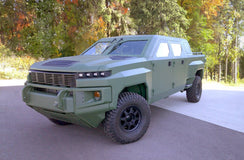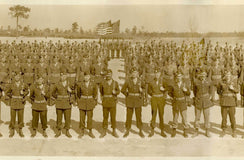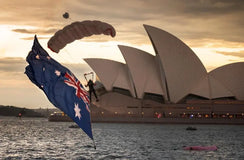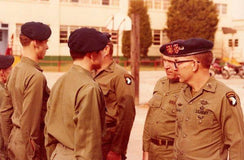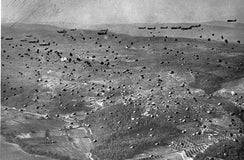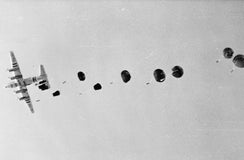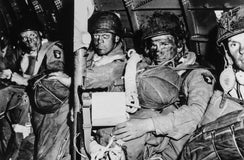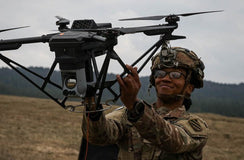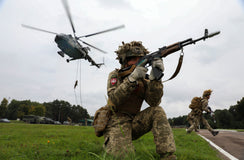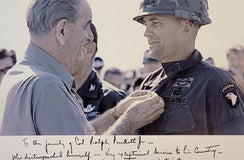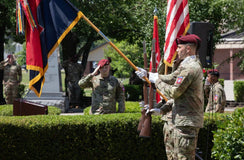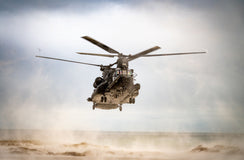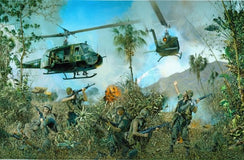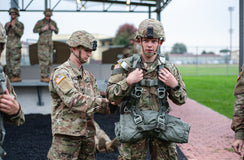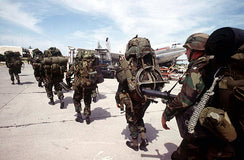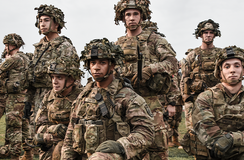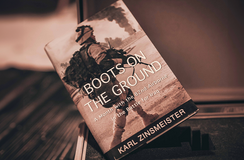Normandy Through Their Eyes: Jumping into Darkness
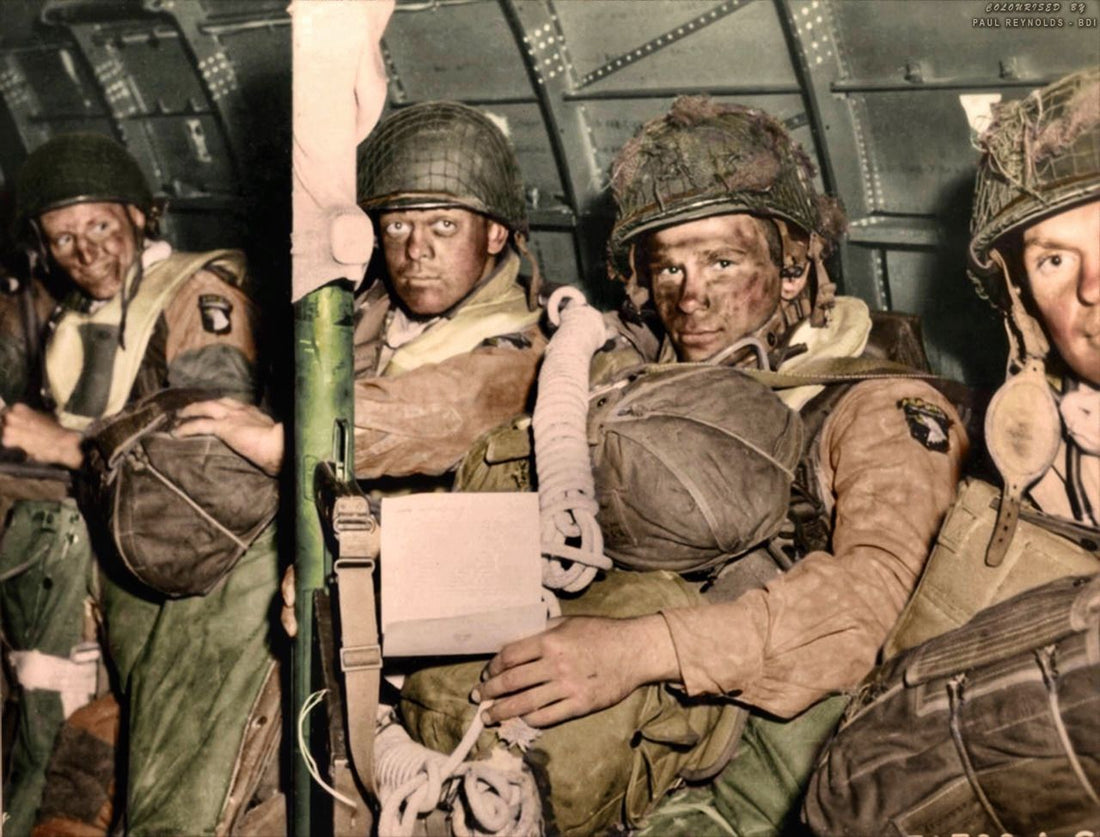
June 6th, 1944, saw the greatest amphibious invasion in human history, and the beginning of the offensive that would eradicate Nazism in Western Europe. However, the first troops in France didn’t land on the beaches but rather parachuted into France on the night of June 5th.
The first men to jump were the Pathfinders, specialized units which would guide the rest of the airborne drops by planting lights and ground beacons in the specified drop zones. The men of the 101st and 82nd Airborne Divisions would follow, their objectives were a range of villages, bridges, and strategic areas, and controlling these would make the Allied advance from the beaches easier.
An armada of C-47 aircraft left England late on the night of the 5th their bellies full of American Paratroopers. The operation began well and formations were kept tight over the channel. However, the formations began to break up due to flak, radio silence, and a lack of navigators on more than half of the planes. Many of the C-47s pushed higher than their planned altitude, or fell lower, to avoid the German flak, which intensified as they flew over the coastline. The C-47s dispersed and the operation began to lose.
The men in the bellies of these planes had no idea - they were in the hands of their pilots, and all they could do was jump when told to jump. And jump out of the rocking and shaking C-47s they did, a real case of out of the frying pan and into the fire.
Robert Flory of the 101st recalls:
“I remember the sky was crisscrossed with tracer bullets and flak. The noise was terrible. I looked down and immediately went into a state of shock. I was over water. My first thought was that the SOB pilot had dropped us over the English Channel. I looked to my right and saw a herd of dairy cows grazing.
As the paratroopers drifted down towards French soil, there was little they could do but pray. Many were killed in the air, their comrades watching, while others landed right on top of German positions.
Private Ken Russell, of the 82nd Airborne, watched one of his fellow paratroopers obliterated before his eyes, another landing directly on a burning building.
“I saw something I never want to see in my life. I looked to my right, I saw a guy, and instantaneously, there was just an empty parachute coming down. A shell of some kind must have hit one of his Gammon grenades. He was blown away.… I was trying to hide behind my reserve chute because you could hear the shells hitting. We were all sitting ducks coming down. One guy landed in the fire [at Sainte-Mère-Église]. I heard him scream one time before he hit the fire. I saw him land in the fire. It was the heat from the fire that was drawing all these parachutes towards the fire.”
There were many close calls, as Frank Brumbaugh of the 82nd experienced.
“I couldn’t see much of the ground—it was more or less of a blur—but I watched all these tracers and shell bursts and everything in the air around me. A stream of tracers, obviously from a machine gun, looked like it was coming directly at me. Intellectually, I knew I could not be seen from the ground under my camouflage chute, but the stream of tracers still came directly at me. It was obviously a futile, but normal, gesture, I guess. I spread my legs widely and grabbed with both hands at my groin as if to protect myself. Those machine gun bullets traced up the inside of my leg, missed my groin but split my pants, dropping both my cartons of Pall Mall cigarettes onto the soil of France.”
As mentioned earlier, many of the C-47s gained or lost altitude to avoid the German flak, and this resulted in paratroopers jumping above other planes, as Roy King of the 82nd experienced.
“I was fascinated by the sight of the tracers flying around everywhere when I saw a huge explosion blossom directly below me.… A plane between me and the ground. No, it was not in trouble, I was! I was above the stream of airplanes that had just dropped their troopers and equipment. My immediate concern was that I could be chopped to pieces by the propellers of the oncoming planes. I was trying furiously to turn and face the oncoming planes in order to be able to see how to safely maneuver through them. I dropped safely through them in spite of my near-hysterical struggles.”
William Dunfee, also of the 82nd, also found himself above American C47s.
“Looking around, I spotted Jim Beavers next to me and our equipment bundle off to one side. Then, looking down, I saw C-47s flying below us. That scared the hell out of me, and I started cussing them. I didn’t want to be turned into a hamburger by our own air force.… While descending, I regained my composure, since it appeared we were going to make it down in one piece.”
Confusion reigned in the air as the paratroopers desperately twisted and turned, trying to avoid the tracer rounds. Burt Collier of the 101st almost made a fatal error:
“I was trying to hang onto my musette bag because I found a broken strap on it on the flight over and had been wondering the whole time whether I could reach under my pack with one hand and hang onto it.… I accidentally pulled one of the cords for that side of my Mae West [an inflatable flotation device that went around the neck and chest], which was under my harness. When it inflated, I couldn’t breathe until I hit the ground and found my switchblade and stabbed it.”
The collective horrific experience of these D-Day heroes, the Airborne troops of the 101st and 82nd, was exacerbated by the fact that most were dropped far from their objectives. It took days before units and companies were able to reunite and had to continue fighting and creating chaos behind enemy lines. Though courageous, these tactic of fighting would only last a few days.
Thankfully, the German infantry and armor weren’t able to make the most of the chaos, likely because they were scrambling to defend the coastline in an effort to push the Allied amphibious assault back into the Channel.

